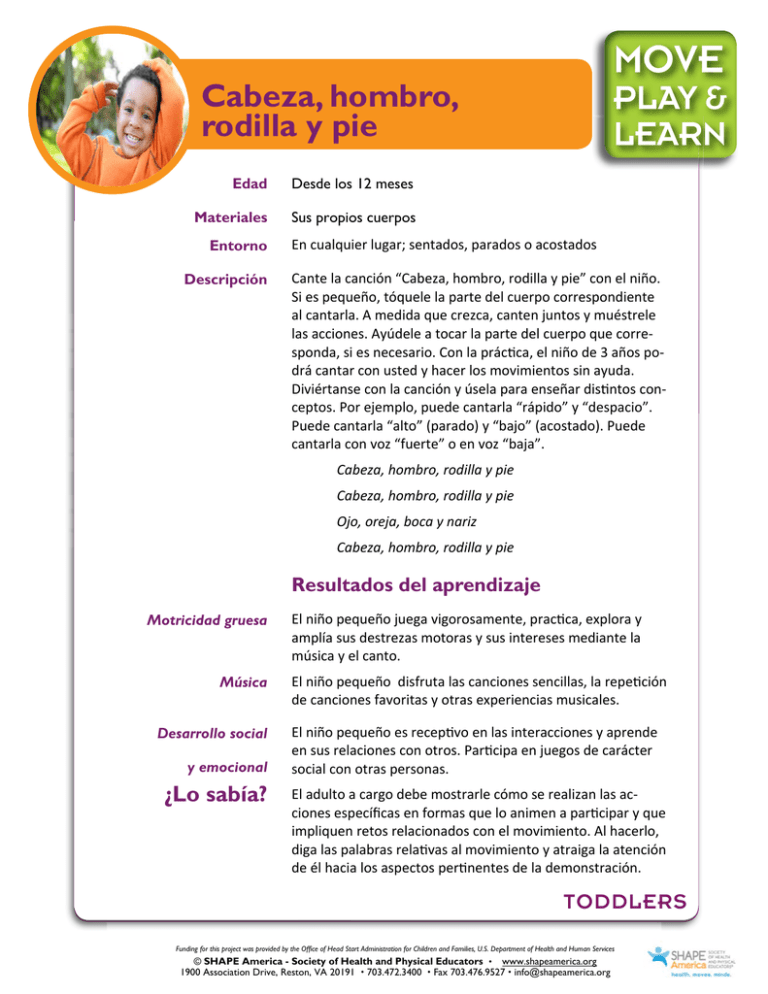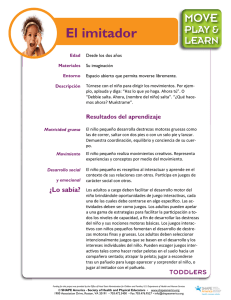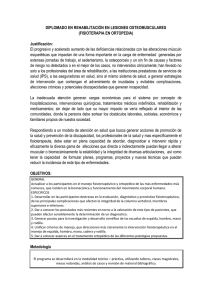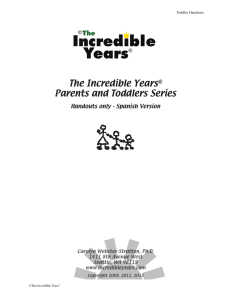Toddler - Head,Shoulder, Knees and Toes_Spanish
Anuncio

MOVE Cabeza, hombro, Roll it Along rodilla y pie PLAY & LEARN Desde and los 12 AgeEdad 12 months upmeses Materiales Materials Ball Sus propios cuerpos Entorno Setting En cualquier lugar; sentados, parados o acostados A carpeted or cushioned surface Descripción Description Social Emotional Cante la canción “Cabeza, hombro, rodilla y pie” con el niño. Si es pequeño, tóquele la parte del cuerpo correspondiente Sit across from the toddler, approximately 3–4 feet, with al cantarla. A medida que crezca, canten juntos y muéstrele legs spread apart and say, “Here comes the ball.” The child las acciones. Ayúdele a tocar la parte del cuerpo que corre‐ will trap the ball with his or her arms and chest. Encourage sponda, si es necesario. Con la prác the child to roll the ball back to you. ca, el niño de 3 años po‐ drá cantar con usted y hacer los movimientos sin ayuda. Diviértanse con la canción y úsela para enseñar dis ntos con‐ Learning Outcomes ceptos. Por ejemplo, puede cantarla “rápido” y “despacio”. Toddler is responsive in interactions with others and begins Puede cantarla “alto” (parado) y “bajo” (acostado). Puede cantarla con voz “fuerte” o en voz “baja”. to build relationships. Toddler engages in social games, including playful give and take. Cabeza, hombro, rodilla y pie Large Motor Skills Cabeza, hombro, rodilla y pie Toddler continues to develop gross (large) motor skills and builds skills Ojo, oreja, boca y nariz in coordination, balance, and body awareness. Toddler gains control of arm movements. Cabeza, hombro, rodilla y pie Did You Know? Toddlers learn the best through activity, especially activResultados del aprendizaje ity that is based on their interests and experiences. Toddlers El niño pequeño juega vigorosamente, prac are also highly motivated by their caregiver’s enthusica, explora y Motricidad gruesa astic amplía sus destrezas motoras y sus intereses mediante la participation, positive feedback, and modeling. Head Start música y el canto. Body Start recommends that caregivers use effective cues El niño pequeño disfruta las canciones sencillas, la repe to support toddlers’ participation and development. ción Música Caregivers should consistently attend to toddlers’ comde canciones favoritas y otras experiencias musicales. munication, including both verbal and nonverbal signs. El niño pequeño es recep Desarrollo social Caregivers should be sensitivevo en las interacciones y aprende to the emotions they conen sus relaciones con otros. Par cipa en juegos de carácter vey, even subtly in verbal and nonverbal communication, y emocional social con otras personas. thus building a trusting, nurturing relationship. Caregivers frequently provide encouragement, including facial, El adulto a cargo debe mostrarle cómo se realizan las ac‐ ¿Lo sabía?should verbal, and or nonverbal expressions, to motivate toddlers’ ciones específicas en formas que lo animen a par cipar y que physical participation. Caregivers may provide physical impliquen retos relacionados con el movimiento. Al hacerlo, diga las palabras rela vas al movimiento y atraiga la atención guidance and support as frequently as needed. de él hacia los aspectos per nentes de la demonstración. TODDLERS Funding for this project was provided by the Office of Head Start Administration for Children and Families, U.S. Department of Health and Human Services © SHAPE America - Society of Health and Physical Educators www.shapeamerica.org 1900 Association Drive, Reston, VA 20191 703.472.3400 Fax 703.476.9527 info@shapeamerica.org


